An oven thermometer measures oven temperature, a meat thermometer reads the internal temperature of meat, a candy thermometer measures the temp of liquid.
Oven Thermometer
The first type is used for measuring the temperature in an area such as the inside of an oven.
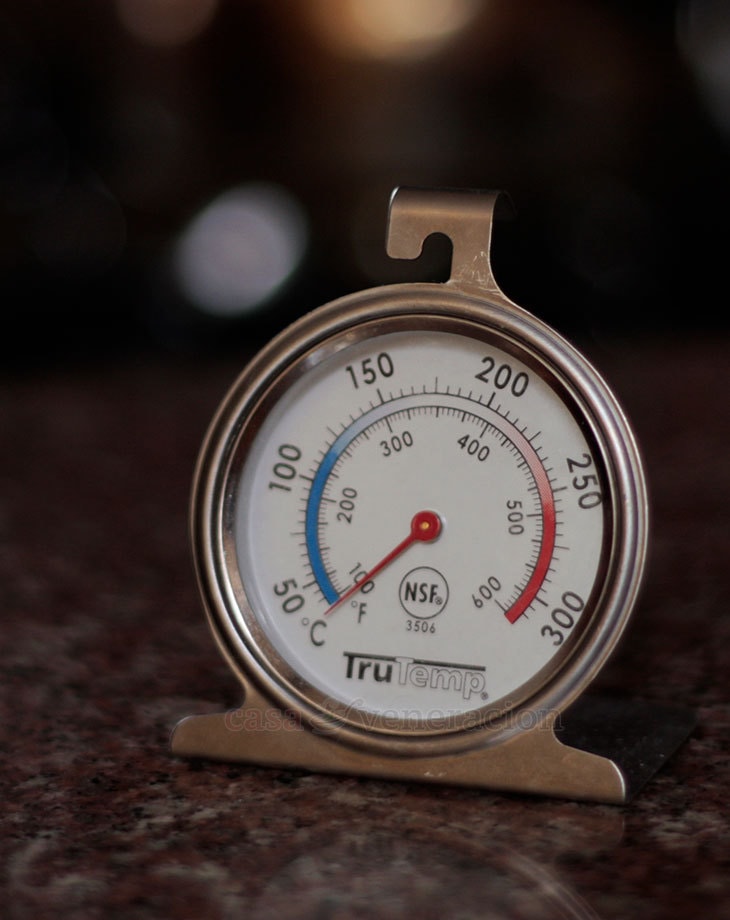
I call it an oven thermometer but I learned rather recently that some models can be used to monitor the temperature of the fridge too. It has feet underneath and a hook on top. You can stand or hang it on the oven rack. If your oven has a glass door, position it where you can read the dial through the glass.
But don’t ovens have built-in temperature control? Yes, they do. But as ovens get old, the insulation wears out and the temperature can become uneven. The built-in control may read 350F but the actual temperature may be lower or higher. Ovens need to be calibrated once in a while but if you don’t have it serviced all that often, there’s this little thing called an oven thermometer to help you along.
Meat Thermometer
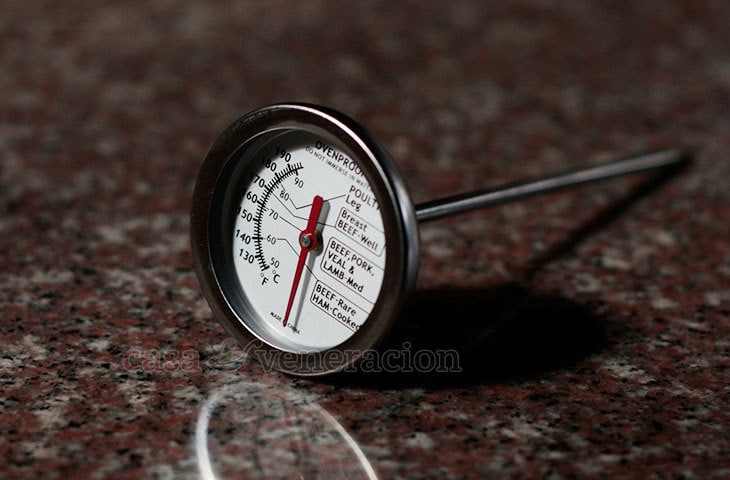
A meat thermometer measures the internal heat of meat such as roasts, or whole turkeys or chicken. It has two parts: the metal probe that is inserted into the meat and a dial to read the temperature.
You stick a meat thermometer into the thickest portion of the meat before it goes into the oven.
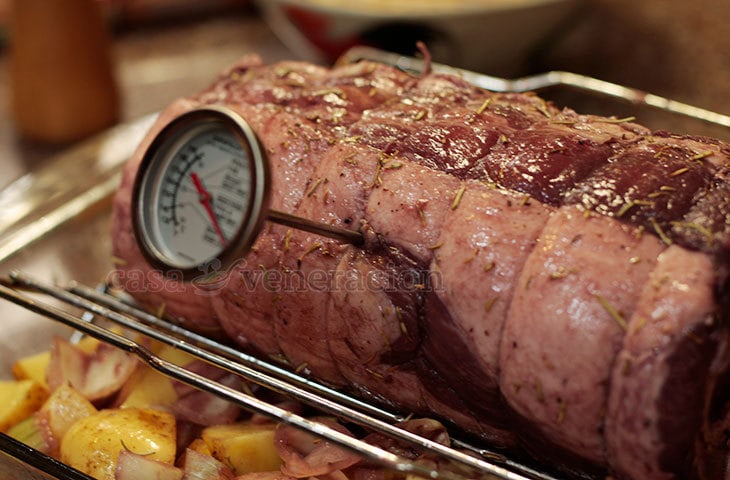
In a roast, the ideal placement is the center of the meat. In a turkey or chicken, some cooks like to insert the thermometer in the breast but I prefer to stick it in the thigh but without touching the bone.
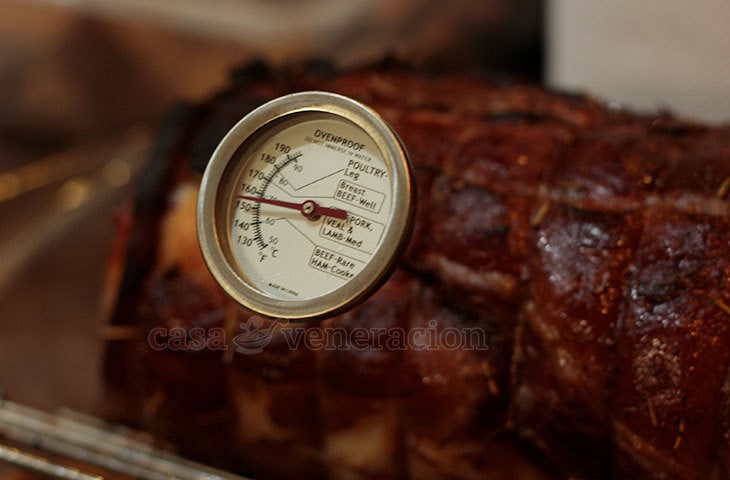
Put the meat in the oven and just wait for the thermometer to register the temperature that corresponds to the desired level of doneness.
Note that this is a conventional meat thermometer which requires that it stays stuck in the meat while cooking. There are instant-read meat thermometers which you don’t have to insert in the meat during cooking. Rather, you take the meat out of the oven after the specified cooking time, stick the thermometer into the thickest portion and it will instantly give you the internal temperature.
Personally, I find the instant-read model which requires the meat to be taken in and out of the oven more inconvenient. Meanwhile, with the conventional model, you can just partially open the oven door, peek and read the temperature, and close the oven door again if the meat needs to cook some more.
Candy / Deep Fry Thermometer
The third kind is the candy / deep fry thermometer for measuring the temperature of liquid in a pan.
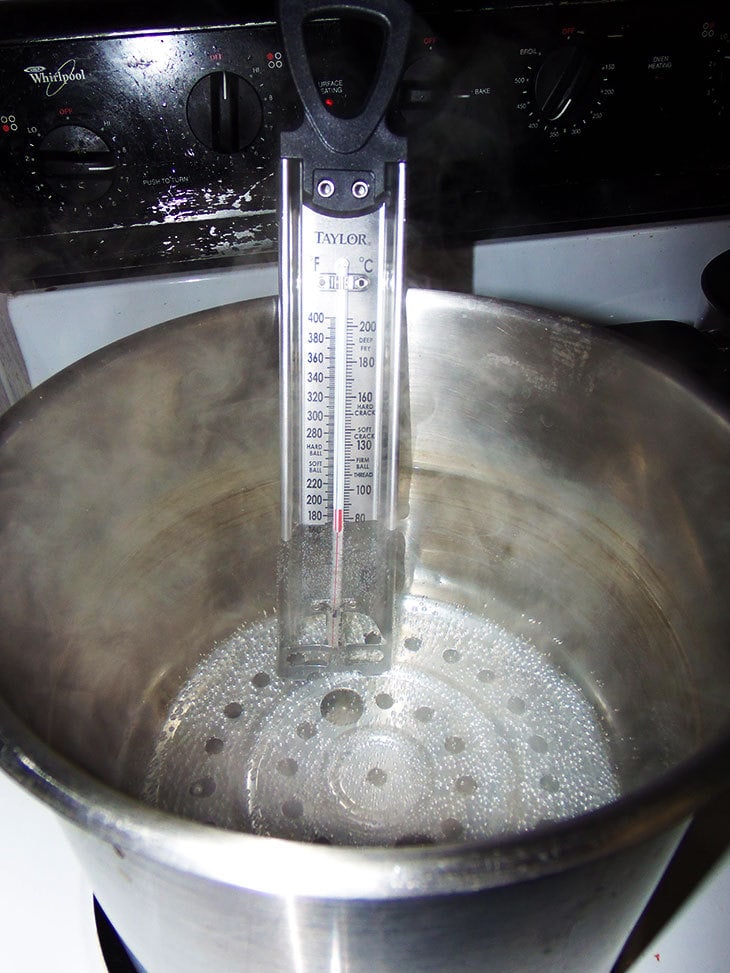
It is the best friend of candy makers and a useful tool for cooks who like to deep fry. The thermometer is clipped on the side of the pan with the probe touching the liquid BUT NOT the bottom of the pan.
Obviously, the photo above shows the thermometer touching the bottom of the pan. It’s a free stock photo as the caption clearly states. We don’t use candy / deep fry thermometer at home and I couldn’t find any other stock photo showing its proper use.
Does a home cook need all three kinds of kitchen thermometer?
Whether you need all three kinds, or just one or two of them, depends largely on the kind of cooking you do at home. If you’re into chocolate, the candy thermometer makes temperating chocolate easier. If you own a deep fryer without an built-in temperature control function, this kind of thermometer is helpful too.
Here at home, we do a lot of cooking and baking everyday but never found the candy / deep fry thermometer necessary. But the oven thermometer and the meat thermometer, I find absolutely useful.
Our oven is already several years old and because the correct temperature is so crucial in baking, the oven thermometer helps to make sure that cookies don’t get burned and cakes don’t sink at the center. I said “helps” because the thermometer will only give you the correct oven temperature. If you mess up the preparation, the correct oven temperature won’t correct your mistakes.
The meat thermometer, on the other hand, takes the guesswork out of roasting meat and poultry. I bought our meat thermometer years ago when I was going to roast a whole stuffed turkey for a family reunion. With the price of turkey, I did not want to make a mistake. I did not want an underdone bird or, worse, an overcooked turkey with meat so dry that no amount of gravy poured over it would cure the defect.